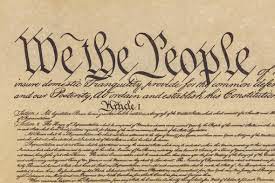In an echo of Toyota Motor Sales v. Reavis, 627 S.W.3d 713 (Tex. App.–Dallas 2021, pet. filed), the Fifth Court found that the plaintiff’s expert testimony in a significant car-accident case was sufficient to create legitimate jury issues on the topics of (1) “human factors” testimony about design defect, (2) a mechanical engineer’s testimony about a safer alternative design, and (3) proximate cause. American Honda Motor Co. v. Milburn, No. 05-19-00850-CV (Nov. 24, 2021) (mem. op.).
Category Archives: Products Liability
 Article VI, clause 2 of the Constitution provides: “This Constitution, and the Laws of the United States which shall be made in Pursuance thereof; and all Treaties made, or which shall be made, under the Authority of the United States, shall be the supreme Law of the Land; and the Judges in every State shall be bound thereby, any Thing in the Constitution or Laws of any State to the Contrary notwithstanding.”
Article VI, clause 2 of the Constitution provides: “This Constitution, and the Laws of the United States which shall be made in Pursuance thereof; and all Treaties made, or which shall be made, under the Authority of the United States, shall be the supreme Law of the Land; and the Judges in every State shall be bound thereby, any Thing in the Constitution or Laws of any State to the Contrary notwithstanding.”
That principle animates the two sides of Toyota Motor Sales v. Reavis, No. 05-19-00075-CV (June 3, 2021), in which a 2-1 Fifth Court majority affirmed a $200+ million judgment in a products-liability case. Greatly simplified, the dispute between majority and dissent can be summarized with two quotes. The majority emphasizes state law and procedure:
At the heart of this case, like many product liability cases, was a battle of the experts. Plaintiffs’ experts examined physical evidence, performed tests, reviewed data, performed calculations, criticized Toyota Motor’s experts, and concluded the vehicle was defective. Toyota Motor’s experts did the same and concluded the vehicle was not defective. The jury properly exercised its prerogative to resolve this conflicting evidence and believed the plaintiffs’ experts. This Court may not second guess the jury’s decision.
(emphasis added). The dissent, federal regulation:
“The Reavises’ theory of liability—that choosing to design a car with seatback strength far in excess of federal minimum standards and utilizing seatbelt design options permitted after decades of comprehensive federal regulation could support a conclusion that federal regulations are inadequate or that the overall design is defective as a matter of law—is unsustainable. … I accept it as theoretically possible that every car ever marketed and sold to this point could be ‘defective’ and that their manufacturers could all be subject to exemplary damages on this basis, or, that virtually all such cars are defective for failure to employ ‘locking/cinching’ lap belts without regard to seatback rigidity, the proof should be up to the task.”
(footnote omitted, emphasis in original). This dialogue strongly echoes the “two narratives” at play in United States ex rel. Harman v. Trinity Indus., Inc., 872 F.3d 645 (5th Cir. 2017), which reversed a $600+ million judgment based on an allegedly-defective highway guardrail:
The trial in this case offers two narratives. One of a hardworking man who, angered by failures of guardrails installed across the United States — with sometimes devastating consequences — persuaded a Texas jury of a concealed cause of those failures. The other of the inventive genius of professors at Texas A&M’s Transportation Institute, who, over many years of study and testing, developed patented systems including guardrails that, while saving countless lives, cannot protect from all collisions at all angles and all speeds by all vehicles — guardrails that have been installed throughout the United States with an approval from which the government has never wavered as it reimbursed states for the installation of a device integral to the system.
 vRide, a vanpool service, sought statutory indemnity from Ford after an accident, contending that the plaintiffs alleged – in substance – a products liability claim. The Fifth Court disagreed: The Cernoseks’ petition did not allege that the Ford van was unreasonably dangerous, was defective by manufacture or design, was rendered defective because it lacked certain safety features, or was otherwise defective. Instead, the petition alleged that vRide represented its vehicles had certain safety features when in actuality the vehicles did not have those safety features and that vRide failed to furnish vehicles with those safety features. In short, the Cernoseks’ petition did not contain allegations that the damages arose out of personal injury, death, or property damage allegedly caused by a defective product.” vRide v. Ford, No. 05-15-01377-CV (Feb. 2, 2017) (mem. op.)
vRide, a vanpool service, sought statutory indemnity from Ford after an accident, contending that the plaintiffs alleged – in substance – a products liability claim. The Fifth Court disagreed: The Cernoseks’ petition did not allege that the Ford van was unreasonably dangerous, was defective by manufacture or design, was rendered defective because it lacked certain safety features, or was otherwise defective. Instead, the petition alleged that vRide represented its vehicles had certain safety features when in actuality the vehicles did not have those safety features and that vRide failed to furnish vehicles with those safety features. In short, the Cernoseks’ petition did not contain allegations that the damages arose out of personal injury, death, or property damage allegedly caused by a defective product.” vRide v. Ford, No. 05-15-01377-CV (Feb. 2, 2017) (mem. op.)
In In re Michelin North America, Inc., the Dallas Court of Appeals conditionally granted a writ of mandamus to protect Michelin from being forced to produce certain discovery. The district court ordered Michelin to produce specifications for tires similar to the allegedly defective tire at issue in that case in addition to financial information for the decade prior to the litigation.
The court of appeals held that Michelin satisfied its burden under Texas Rule of Evidence 507 to resist the discovery of trade secrets through the affidavit of an engineer who worked in Michelin’s legal department but that Michelin failed to satisfy its burden of proving its financial data was a trade secret because it failed to offer an affidavit until after the hearing on the motion to compel (helpful hint: it should be filed 7 days before the hearing under TRCP 193.4(a) if it is in affidavit form). The court also held that the plaintiffs failed to meet their burden under Rule 507 to show “with specificity” exactly how the lack of information would impair the presentation of the case on the merits “to the point that an unjust result is a real, rather than a merely possible, threat.” On the issue of financial information, though Michelin failed to timely prove its trade secrets privilege, Michelin was saved by a secondary argument that the district court’s order was too broad because the discovery included financial information from several years earlier and only current financial information is relevant for calculation of punitive damages.
The court today issued an opinion in a products liability indemnification case arising out of a helicopter crash in North Carolina. The company that operated the helicopter sued the manufacturer of a defective gearbox after the operator settled with the estate of the deceased pilot for $2.5 million. The gearbox maker had agreed to indemnify the operator for all losses, claims, and expenses arising out of any defective work. The jury found that the negligence of both parties had been a proximate cause of the accident, but the trial court set aside that finding with respect to the gearbox manufacturer and rendered a take-nothing judgment on the operator’s indemnification claim. The court of appeals affirmed, holding that there was sufficient evidence that the operator’s negligence caused the helicopter to crash. The court then accepted the manufacturer’s argument that the express negligence doctrine barred the operator’s indemnity claim because the indemnity agreement failed to state that it would require the manufacturer to indemnify against the operator’s own negligence. Even though the manufacturer’s own negligence had been found to be a proximate cause of the crash, the operator could not recover against the manufacturer because the parties did not contract for proportionate indemnity.
American Eurocopter Corp. v. CJ Systems Aviation Group, No. 05-10-00342-CV
